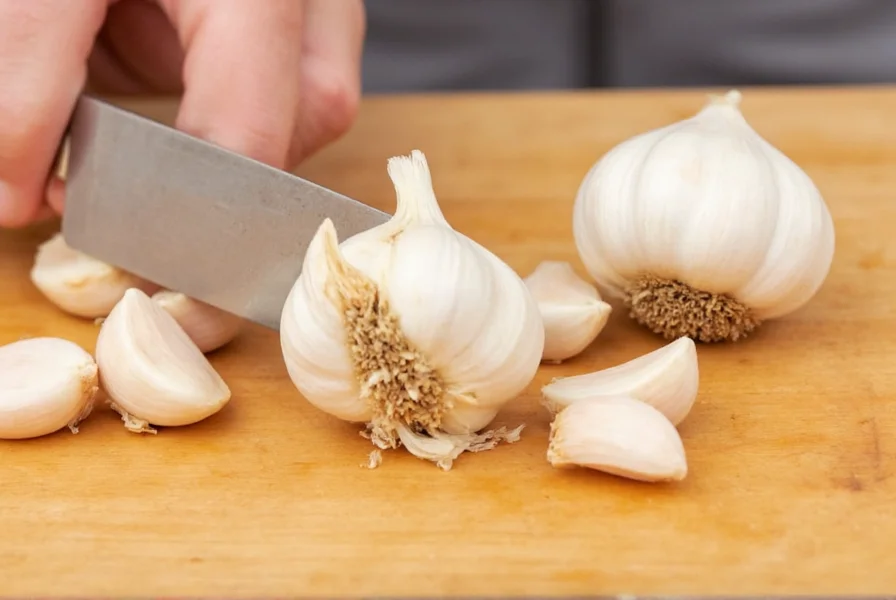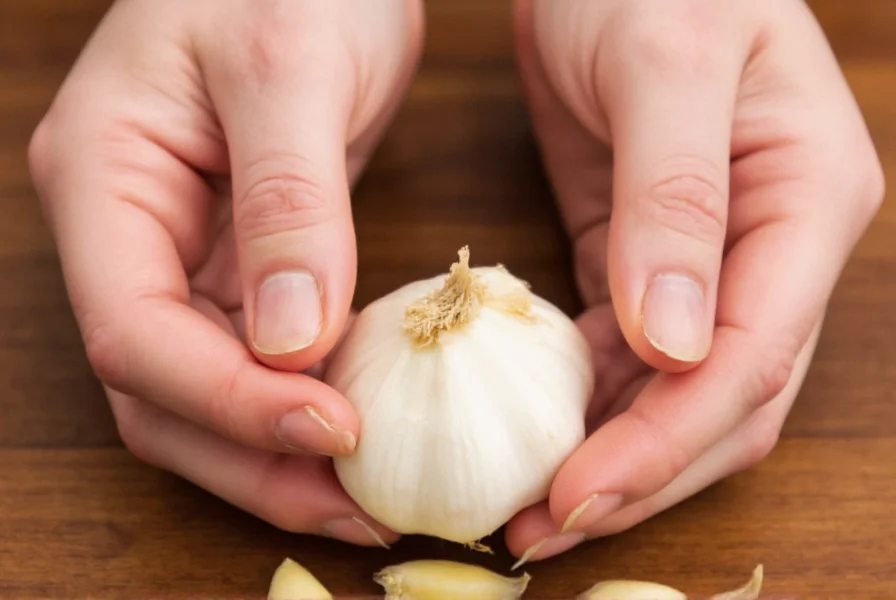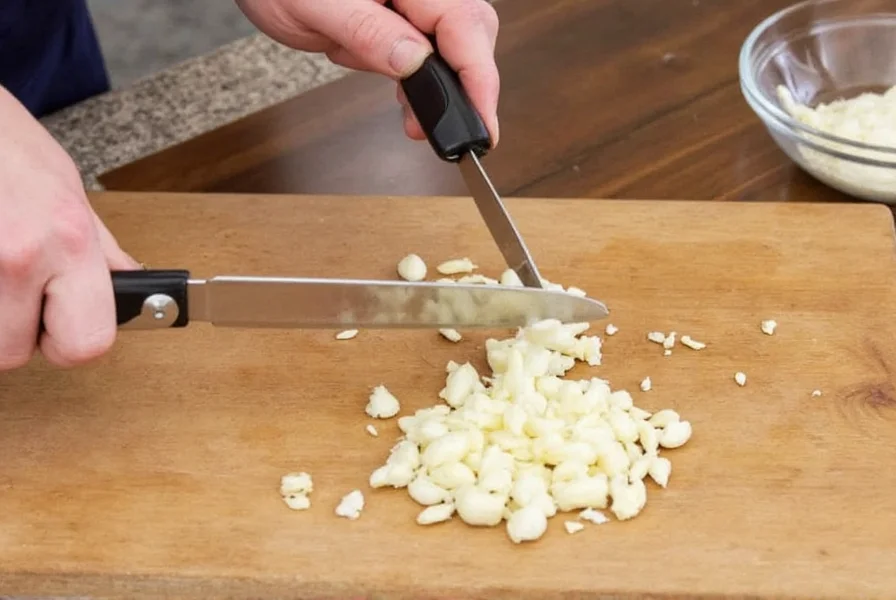Properly minced garlic transforms dishes with its aromatic punch, but many home cooks struggle with inconsistent results or sticky fingers. Whether you're preparing a simple pasta sauce or an elaborate curry, mastering garlic mincing techniques ensures optimal flavor distribution and texture in your cooking.
Essential Tools for Mincing Garlic
Before diving into techniques, gather these kitchen essentials:
| Tool | Best For | Limitations |
|---|---|---|
| Chef's knife (8-inch) | Traditional mincing, maximum flavor control | Requires practice for consistent results |
| Garlic press | Quick preparation, minimal cleanup | Can create bitter garlic if over-pressed |
| Microplane grater | Ultra-fine mince, immediate incorporation | Difficult to measure precise amounts |
| Food processor | Large batches, consistent texture | Can easily over-process into paste |

Step-by-Step: Traditional Knife Mincing Technique
The knife method remains the gold standard for how to mince garlic cloves properly because it releases essential oils without crushing cells too aggressively. Follow these steps:
- Separate a clove from the bulb and peel the papery skin
- Lay the clove flat on your cutting board
- Place a chef's knife flat-side down on the clove
- Gently press down with the heel of your hand to smash
- Remove the green sprout if present (reduces bitterness)
- Chop vertically across the smashed garlic
- Rock the knife repeatedly while gathering pieces together
- Continue until uniformly fine (about 1-2 minutes)
This technique for mincing garlic with a knife creates the ideal balance between cell rupture (releasing flavor compounds) and preservation of texture. Professional chefs prefer this method because it allows precise control over final consistency.
Alternative Methods for Different Kitchen Setups
Not everyone has professional knife skills or equipment. Here's how to achieve quality results with alternative approaches:
Using a Garlic Press
For those wondering how to mince garlic without a knife, a garlic press offers convenience:
- Peel cloves completely (some presses work with unpeeled cloves)
- Place in press chamber
- Squeeze handles firmly but gently
- Scrape minced garlic from the exterior
Pro tip: Avoid over-pressing, which extracts bitter compounds from the garlic's core. This method works well for how to mince garlic quickly when time is limited.
Microplane Grating Method
For recipes requiring immediate incorporation like salad dressings:
- Peel garlic clove
- Hold firmly against microplane grater
- Grate using downward motion
- Use immediately (grated garlic oxidizes fastest)
Avoiding Common Garlic Mincing Mistakes
Even experienced cooks make these errors when mincing garlic cloves:
- Over-processing: Creates bitter garlic paste instead of distinct minced pieces
- Ignoring sprouts: Green sprouts add unpleasant bitterness
- Using dull knives: Crushes rather than cuts, releasing excessive enzymes
- Adding to hot oil immediately: Causes burning before flavor develops
For the best way to mince garlic cloves, remember that consistency matters more than fineness. Uniform pieces cook evenly and distribute flavor throughout your dish.
Managing Sticky Hands and Odors
Garlic's sulfur compounds cause persistent stickiness and odor. Combat this when learning how to mince garlic without sticky hands:
- Rub hands with stainless steel under running water
- Use a paper towel barrier when handling cloves
- Chill garlic slightly before processing (reduces stickiness)
- Wear thin food-safe gloves for large batches

Storing Minced Garlic Properly
Freshly minced garlic loses potency within hours. For meal prep:
- Store in airtight container with olive oil (up to 3 days)
- Freeze in ice cube trays for portioned cooking
- Never store at room temperature for extended periods
- Add a pinch of salt to preserve color and flavor
Understanding how to mince garlic cloves correctly elevates everyday cooking. The traditional knife method provides superior flavor control compared to mechanical alternatives, though each technique has its place depending on your recipe requirements and kitchen setup.
Frequently Asked Questions
What's the difference between minced and chopped garlic?
Minced garlic is cut into very fine pieces (about 1/16 inch), creating maximum surface area for flavor release. Chopped garlic is coarser (1/8 to 1/4 inch), providing more texture and milder flavor. Minced works best for sauces and dressings where you want garlic to distribute evenly, while chopped suits recipes where you want distinct garlic pieces.
Can I use pre-minced garlic from the jar?
While convenient, jarred minced garlic contains preservatives that alter flavor and often has a bitter, processed taste. Freshly minced garlic releases allicin compounds that create superior aroma and flavor complexity. For best results in most recipes, especially those where garlic is a primary flavor, freshly minced is always preferable.
Why does my minced garlic sometimes turn blue or green?
This harmless color change occurs when garlic's sulfur compounds react with acidic ingredients or certain metals. It's most common when using garlic with lemon juice or in aluminum pans. The color doesn't affect flavor or safety, though it may look unappetizing. To prevent this, add acidic ingredients after cooking or use non-reactive cookware.
How fine should minced garlic be?
Properly minced garlic should be uniformly fine (about 1/16 inch or smaller) with no large chunks. When spread on a cutting board, it should hold together slightly when pressed but separate easily. The ideal consistency allows garlic to distribute evenly throughout your dish without creating concentrated pockets of intense flavor.
Should I add salt when mincing garlic?
Adding a pinch of salt during mincing helps break down garlic cells through osmosis, creating a smoother texture and more consistent mince. The salt also helps prevent browning during cooking. However, be mindful of your recipe's total salt content, as this small amount contributes to the overall seasoning.











 浙公网安备
33010002000092号
浙公网安备
33010002000092号 浙B2-20120091-4
浙B2-20120091-4